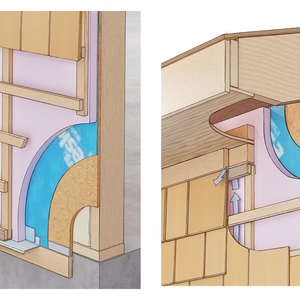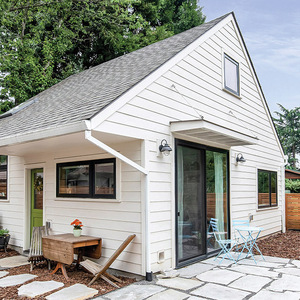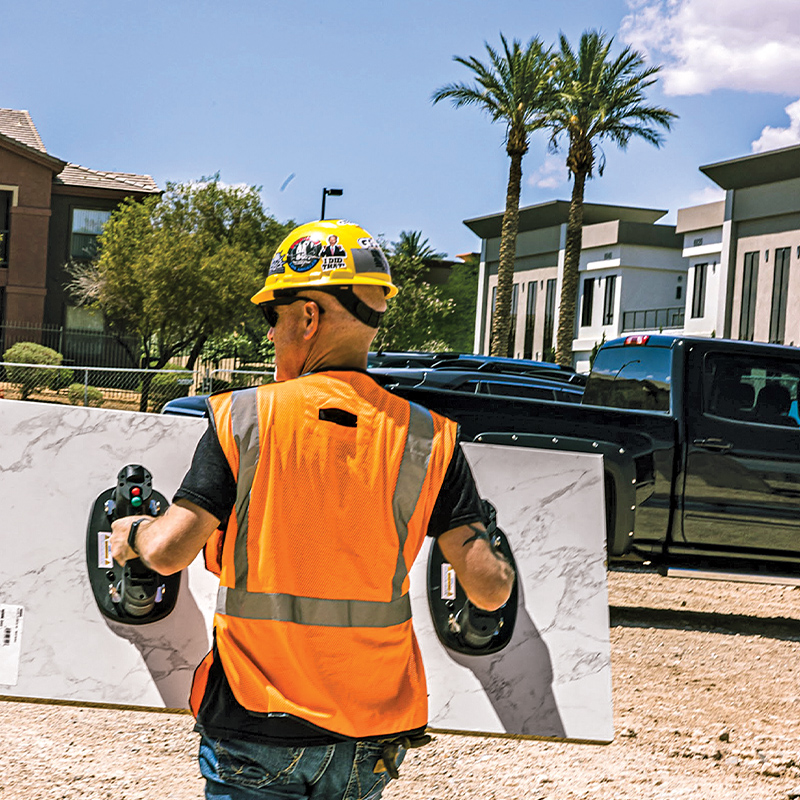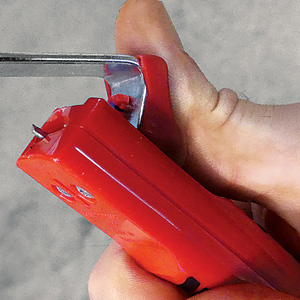Arc Fault Breaker Troubleshooting

Just put an addition on my house. Installed arc fault interuptor breakers (Siemens) for the bedroom lights (15 amp) and for the bedroom outlets (20 amp). Trying to power up the bedroom lights to hang rock after work, but no luck. I have four lights coming off the J-box (bedroom and three closets), but I’m only energizing two of them (bedroom and one closet). The other two I’ve put wire nuts on the hot wires. For some reason, my breaker is showing yellow (tripped), and will not reset.
Since this is wired on a subpanel, the bar is split with the right half wired as neutral and the left wired as ground.
What am I doing wrong that this thing won’t reset? Do I need to energize all the lights (in other words, install fixtures and switches at all four locations)?
How do I troubleshoot this thing. The Siemens Troubleshooting Guide says something like, “if it doesn’t work, something is not wired right” which is of no help whatsoever.
So, electricians… what are some common wiring mistakes I might have made?



















Replies
This is just a guess but the overhyped AFCI has a GFCI function built into it. So there is a spot on the breaker that you attach the neutral [white] wire and there is a coily white wire built into the breaker that you attach to the neutral bar of your subpanel.
Other than than, you probably have something miswired somewhere, perhap a bare ground touching a neutral terminal. Or it could be defective.
~Peter
Try snapping the breaker to the OFF position and then to the ON. Many breakers will resist going to ON when tripped unless they are snapped OFF first. Good luck
The one thing that you want to check is to make sure that the neutral on this circuit is not connect to another neutral.
If you don't see any problem there then I would swap the AFCI with the 20amp one. Since you don't have any significate load on the circuit yet it is safe for a temporary test.
If that one does not trip them you most likely have a bad AFCI.
If it does then you need to check the wiring. Start by isolating the wires at the first box. If it does not trip them it is down stream.
Look for an nicks in the insulation. Specially if you have any metal boxes.
"The one thing that you want to check is to make sure that the neutral on this circuit is not connect to another neutral. "
I don't know what you mean by this. Can you explain a little further?
Thanks
After the neutral and hot exist the AFCI neither one should be connected to another circuit(s). Of couse this is not down with hots,
But sometime you might have a box with say switches for multiple lights and have them sourced from different circuit breakers. You don't want to mix the neutrals. They won't cause a problem with CB (althrough the wire might get overloaded or may not depending exactly what was done). But GFCI will trip. And the AFCI has GFCI features, but at a higher trip current level than GFCI's.
Also if you use a multi-circuit you you run 12/3 (or in this case 14/3) from the pannel with the 2 hots on breakers on different legs and one of the is AFCI or GFCI protected then you will get false trips.
Ground fault detection works by running both the hot and neutral through a transformer so that the signal out is the difference in the currents. So if the is anyplace down stream from the AFCI/GFCI where the neutral is has another path for the current to flow through an a neutral from another circuit then it won't flow by through the transformer. Likewise if the hots are crossed after the GFCI/AFCI then you can have more current flowing back through the transformer than flows out. But that is much rarer problem.
And of course you might have a ground fault. That is where current flows from the hot to the ground. That is why I suggested looking for nicks in the wire.
And of course a miswired light that is between hot and ground instead of hot and neutral. And there might be a fault inside a light fixture where the neutral is grounded.